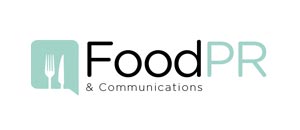There has been much debate in the PR world in recent years over whether or not there is a place for the traditional press release. This short video from Ragan Communications is worth watching: Why the Press Release is not dead
Engaging with the media, in the traditional sense, is still a vital and relevant element of a PR strategy . The humble press release is your key piece of artillery.
Here at Food PR we have come up with our top ten tips to help you build the most effective press release:
1: Do not write a a press release just for the sake of writing one: Think about it logically before embarking on drawing up a press release. Is there enough news to warrant a press release? Could you get the information across via a blog post or social media sharing instead? If there is not enough interesting content for a press release, you will end up repeating yourself and writing waffle simply to fill space. Press releases should be informative and factual.
2: Think like a journalist. not a salesman: Press releases are not sales letters or ad copies. A bug bearer of ours is the use of unnecessary superlatives such as.. amazing, delicious, exquisite, wonderful, best, spectacular etc. Simply stick to the facts and avoid exaggeration – less is more. (ED: “The XYZ Restaurant serves delicious food in spectacular setting with an amazing atmosphere” now, if you must that’s fine for marketing material, but for the love of God don’t put that language into a press release. Who exactly says its amazing food? who think the atmosphere is brilliant? – that is personal opinion and it’s better left out of the release or attribute personal opinions to yourself in a quote. ‘Nuff said). Use symbols only when necessary!!!!
3: Use quotes: Quotes should be used to convey personal opinion, emotion and insight in a press release. If you want to make claims do it in a quote i.e. Maria Downey, Marketing Director of Irish Cheese says “over the last 5 years we have become the leaders in producing high quality chesses. Our cheeses are the best in the west”.
4: Lack of proof reading equals lack of effort: Always ask someone to proof read your press release. They may spot crucial grammar and spelling mistakes which you missed out on. The ‘flow’ of your release will also be much more apparent on proof reading. We read draft press releases out loud for this very reason, to get the flow right. If in retrospect you notice a typo or misspelling, when it’s online it’s an easy fix but if it’s been sent to media don’ berate yourself. Mistakes happen even to the best of us.
5: Use simple language over jargon: The overuse of jargon can make a press release difficult to relate to and cause readers to lose interest due to confusion and lack of understanding. If you must use a technical terms then make sure to provide an explanation .
6: Lack of focus results in lack of interest. Have your press release convey a small number of key messages. Constantly ask ‘why’? and have your press release answer this question to statements that are made i.e. why did you open a new venue, why did you launch a new product, why adid you engage in a new partnership? . Focus on the project, product or campaign which you are wishing to promote and save other campaigns or news stories for future press releases. Trying to tackle too many issues at once will only result in an overload of information.
7: You are the storyteller: Every press release must be thought of as a story with you being a storyteller. You want to ensure that your story reaches the eyes and ears of your target audience. A unique story line, a human interest aspect, something new, something topical, trendy or timely or maybe something you personally relate to can all make a story worth telling and importantly, make it memorable and worth sharing.
8: Remember to stamp your brand on your press release: This is an excellent opportunity for brand recognition exercise so use it to the best of your ability. Use this opportunity to feature some nice images – good imagery is often the key factor in deciding whether your story will ‘land’ or not. We use Picframe for highlighting a number of low res images for clients as often it’s the images that catch the eye of an editor.
9: Attention to detail will pay off: If you ensure that you have put sufficient effort into creating a strong press release, then you will most certainly reap the rewards. Attention to detail is crucial and minor elements of the press release cannot be overlooked. One such element is formatting: We use 1.5 line spacing for clarity. Make sure and have contact details at the base of your release, insert your logo and in Notes To Editor section add any award wins or accolades.
10: Keep it short and snappy. Remember less is more. Stick to a single page with no more than 400 words on it, two pages with 1.5 line formatting if you must – but’s thats it. No more. Have a strong intro, include a strong couple of paragraphs with quotes from credible sources, and then end with some information about your business and contact details.
If you have any additional information don’t disregard it or use it to pad out the release, add it to Notes To Editor section. As mentioned above quotes are important, however that doesn’t mean you should overuse them. Rule of thumb is max two people from any one organisation should be quoted in a press release.
Finally, always keep an eye out that your headline is strong and captures the attention of the journalist you are pitching to. Your headline will not necessarily the one which will be used if the release is printed so no need to try to be funny or sensational. Add the headline to your subject line on your email example – “Press Release: Potato Ltd. Launches New Line of Zero Fat Crisps”
The most important tip is to remember your press release is essentially a story which you are trying to tell the media, in the hope they would like to tell this story to their readers, or listeners – it’s not a soapbox to broadcast how wonderful you are nor is it a sales pitch.
If in doubt Stay Calm and Call Food PR





